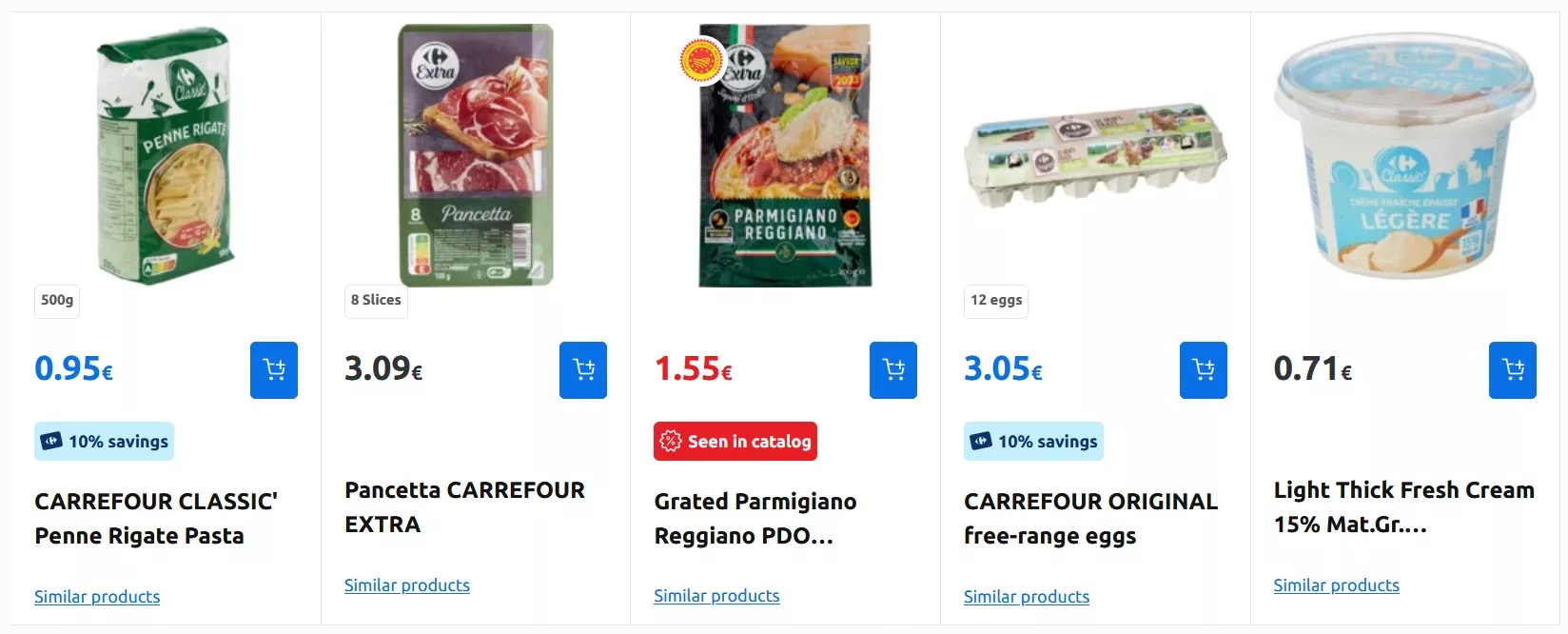Generative AI will revolutionize retail in general and e-commerce in particular. That’s the message of a conference I gave in Belgium on October 6, 2023 (you’ll find the slides below). In this article, I present 6 concrete applications of generative AI in e-commerce. Some are more innovative than others. But all of them call for testing. This was the main message of my conference: you need to experiment to understand the potential of generative AI tools and identify application opportunities. If you would like to be accompanied, don’t hesitate to contact IntoTheMinds.
Request support from IntoTheMinds
E-commerce and generative AI: all you need to know in 30 seconds
- 80% of the use of generative AIon websites concerns content creation (mostly text for blogs, much more rarely images).
- Generative AI can also be used for Product Information Management, generating more complete product descriptions. Our tests show that this description process works from a simple image. This opens new applications, particularly on second-hand websites, where the descriptions provided by users could be better.
- LLMs (Large Language Models) call into question the very existence of machine learning-based recommendation algorithms.
- Chatbots are entering a new dimension thanks to LLMs. They are no longer restricted to simple scenarios. This simplifies the online shopping experience, particularly in the food e-commerce sector.
- In apparel e-commerce, GAN’s technology can enable web users to visualize how a garment would look on them. This technology is based on VIRTON-GAN’s. In China, influencer avatars are created using generative AI. These avatars sell products 24/7 on e-commerce websites. The use of generative AI for video is still emerging but promises to revolutionize customer interactions, especially customer service.
1/ Content creation
Content creation is the most obvious and widespread use case. 80% of companies that have integrated generative AI into their activities use it to create content. Research conducted by IntoTheMinds among some one hundred companies shows that;
- 90% of content creation concerns text generation
- 10% concerns image generation
We were unable to find any companies using generative AI to generate videos. Yet this is also one of the many possibilities of generative AI in marketing.
Regarding text content generation, I warned conference participants about the risks associated with “duplicate content.” As I had shown in in-depth research, texts produced by ChatGPT have a high degree of similarity (up to 72%). Not to mention that texts produced by LLM’s (Large Language Models) are mostly consensual and of little interest.
Texts produced by ChatGPT have a high degree of similarity, which increases the risk of duplicate content.
2/ Product Information Management (PIM)
I devoted a detailed post to generative AI for Production Information Management purposes. Here’s a summary of the situation.
LLM’s can be implemented very easily to improve your e-commerce website by:
- improving product descriptions
- varying descriptions for equivalent products to improve the SEO effect
- producing product descriptions based on technical information
- producing product descriptions from photos
I’ve shown that it’s possible to combine ChatGPT plugins to produce surprising results:
- you can take a photo of a package, analyze it with ChatOCR, and produce a product description
- specify the URL of a product sheet to be enhanced by WebPilot in ChatGPT and request a product sheet
- take a product photo, analyze it with SceneXplain, and produce a product description with ChatGPT.

In the short term, features boosted by generative AI should become exposed:
- on second-hand websites in the “front end” to help users produce complete, attractive product sheets that will be better indexed on search engine
- on e-commerce websites in the “back end”: to simplify product line placement by employees
3/ Online recommendations
I’ve been talking about recommendation algorithms for many years. The arrival of LLMs has overturned the relevance of machine learning-based algorithm research and development. Today, Large Language Models can produce highly relevant, even surprisingly simple, recommendations.
A leading researcher in recommendation algorithms even took to LinkedIn to ask whether it was still necessary to invest in machine learning.
The benefits of LLM-based recommendation algorithms are obvious in e-commerce. LLMs greatly simplify access to online recommendations. They are a vector for cross-selling. They also offer greater flexibility and the possibility of benefiting from a dataset beyond one’s transactions and customers.
4/ Chatbots
In a keynote in Brussels in June 2023, I detailed my vision of a chatbot powered by a Large Language Model on food e-commerce websites. Retailers, who now conduct around 10% of their sales online, stand to benefit significantly from this by providing an answer to a problem that everyone has experienced: what to make for dinner tonight.
Finding recipe ideas is a real “headache” in the marketing sense of the word. Companies like Hello Fresh have built their entire business model around it. LLM offers retailers an extraordinary opportunity to help their customers and simplify purchasing. In my keynote, I explained that the Instacart plugin for ChatGPT foreshadowed what e-retailers should be doing.
Carrefour launched its Hopla chatbot a few days later, making my vision a reality. It was now possible to receive personalized advice, request all possible modifications in a natural language, and move effortlessly onto a shopping cart and order. It was a real revolution.
5/ Augmented e-commerce experiences in fashion
Generative AI makes it possible to create an ultra-personalized customer experience. GAN can be a great ally in helping customers visualize their next purchase. This is the job of start-up Veesual, which uses VIRTON-GANs (Virtual Try-On GAN) to visualize clothes on virtual mannequins in real-time.
The distinctive feature of VIRTON-GAN’s is that they preserve the integrity of the objects. A garment processed by Veesual will, therefore, not be distorted by the algorithm.
In e-commerce, the applications are numerous, and concrete examples can already be seen on the websites of major retailers. On the website of French company La Redoute, for example, you can visualize the garments of your choice and create looks on virtual mannequins. Several mannequins are available, which can be chosen according to one’s morphology (see screenshot below).
6/ Avatars and deepfakes
The last use case is certainly the most complex but fascinating to implement. In China, companies have cloned influencers to create video avatars that sell products on the Internet 24 hours a day. Scripts are produced with an LLM, transcribed with the influencer’s voice and lip movements synchronized to give the impression of having a real model in front of you. Thanks to a few minutes of training video and $1,000, these AI clones can sell products continuously on platforms such as Taobao and Douyin.
The use cases go far beyond online sales. Eventually, customers can access 24/7 video customer service and feel like a real human is talking to them. Video avatars will replace imperfect chatbots, giving customers answers straight from an LLM.
Posted in Innovation.



